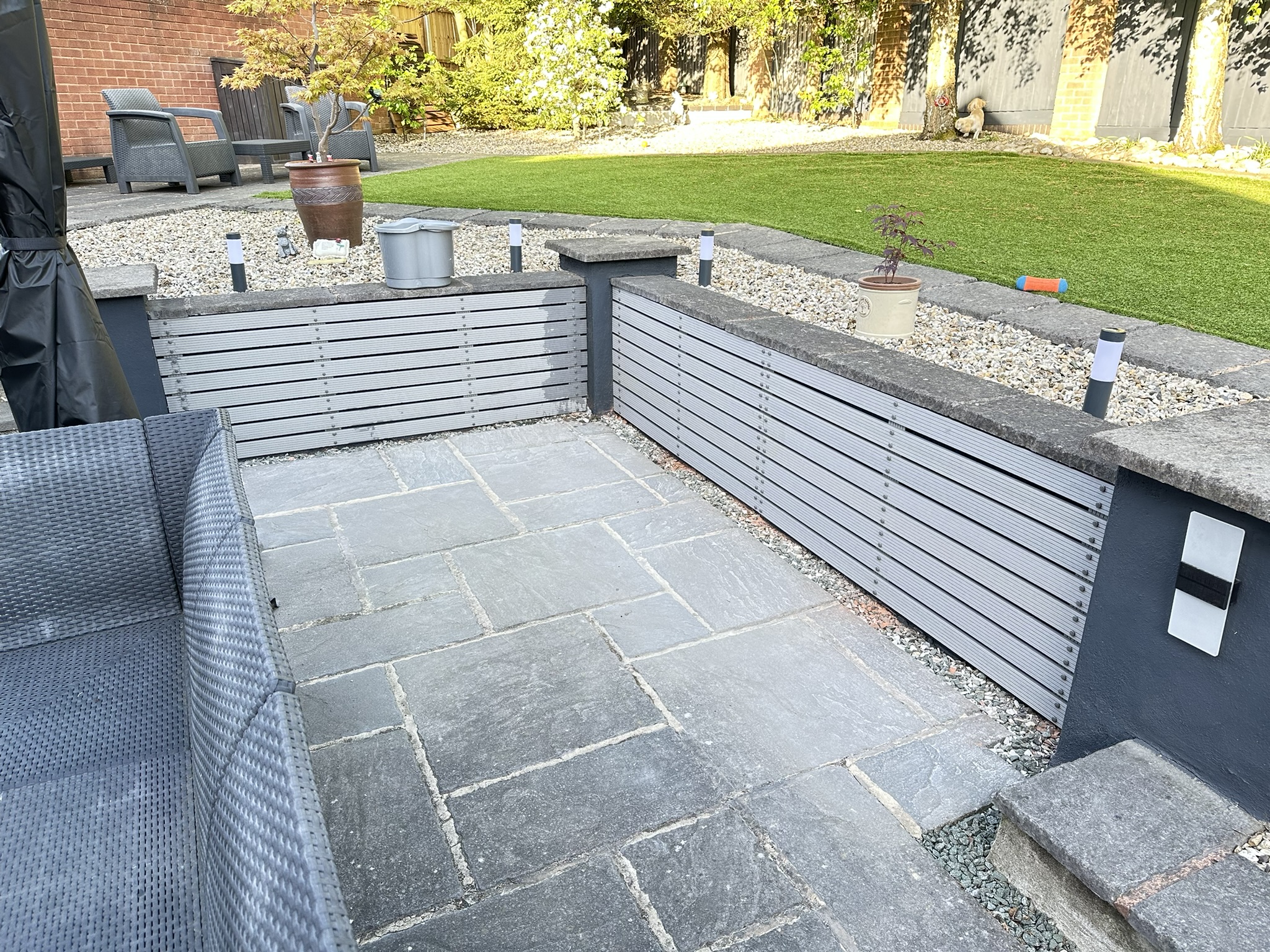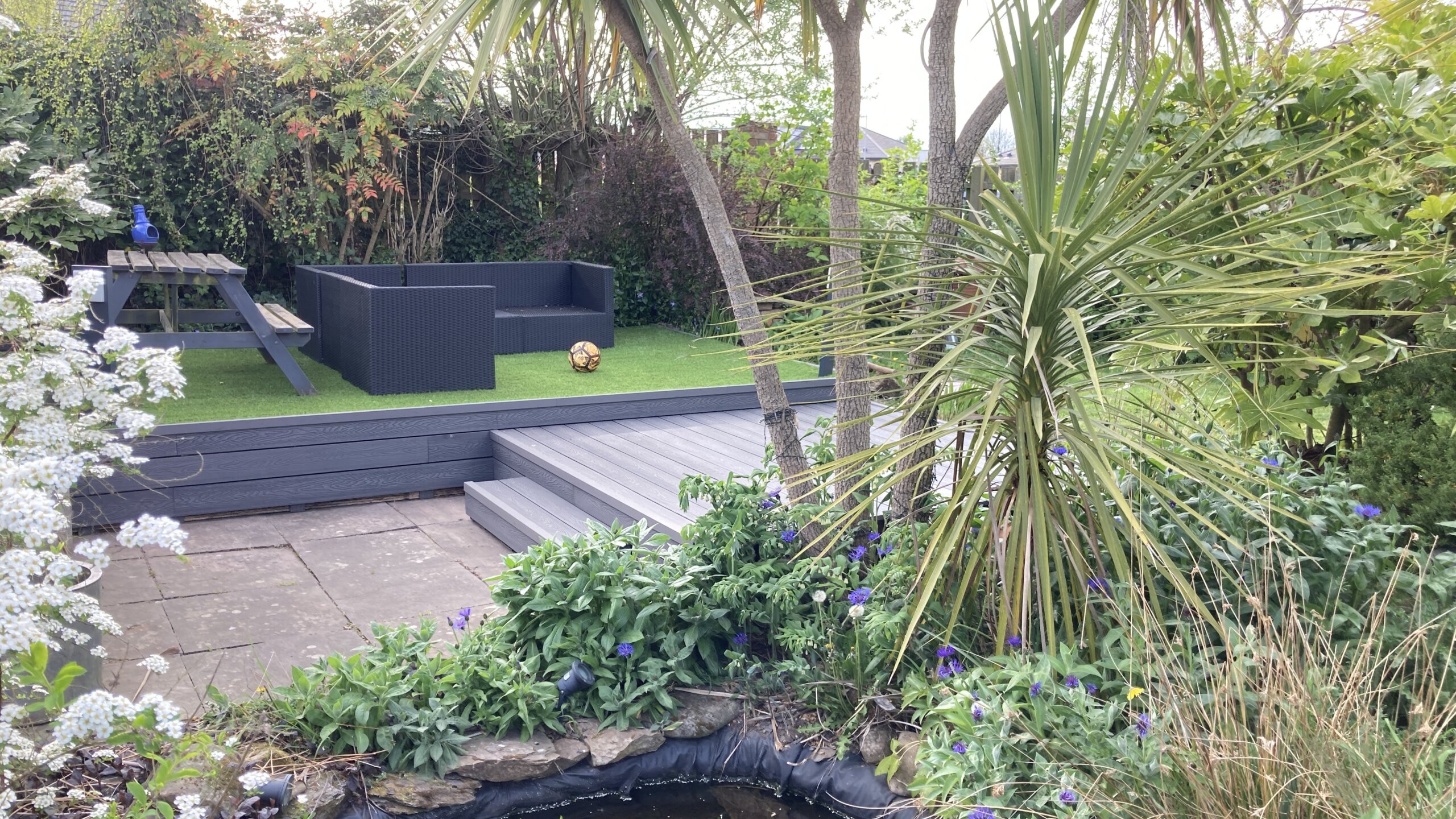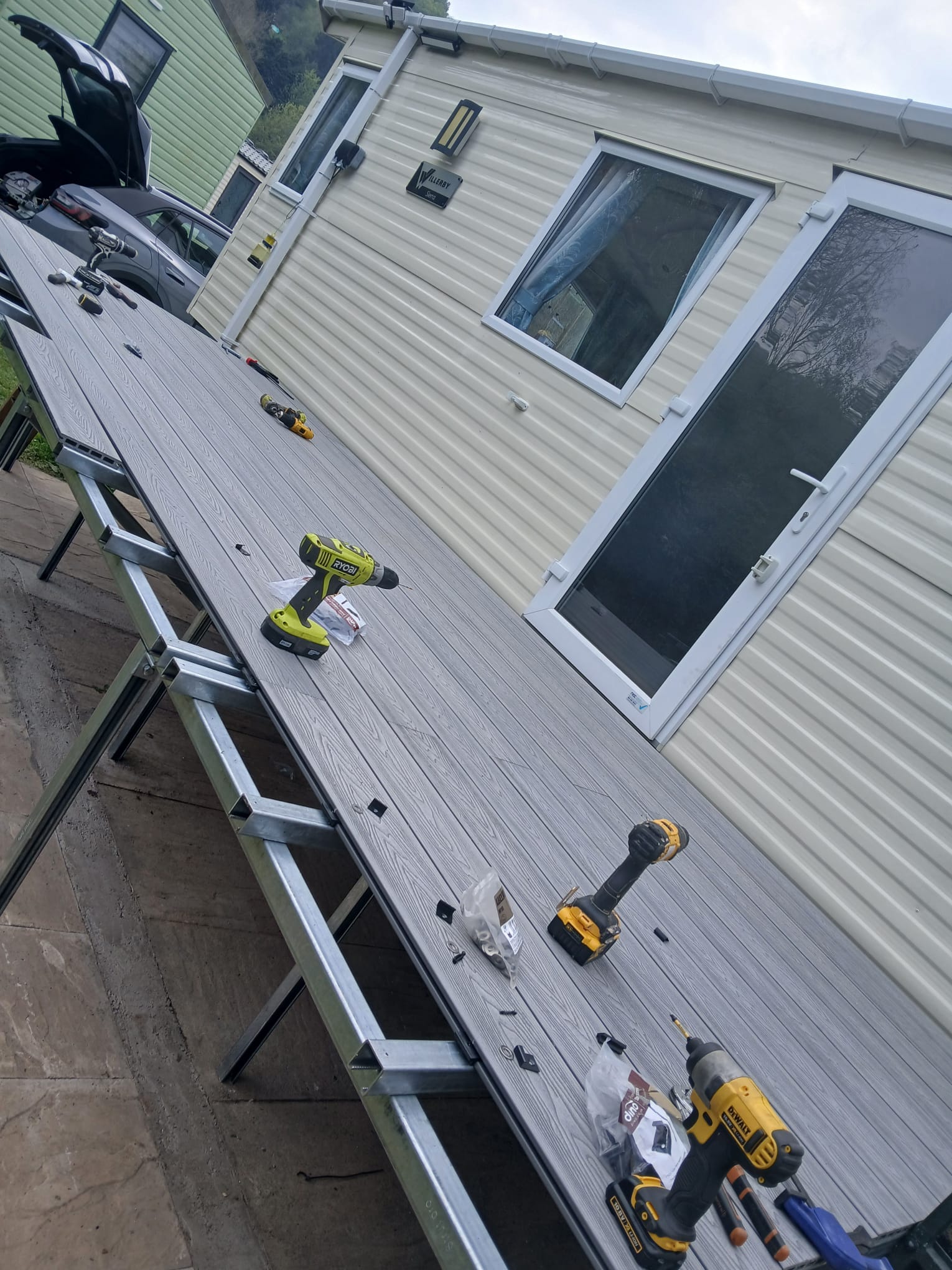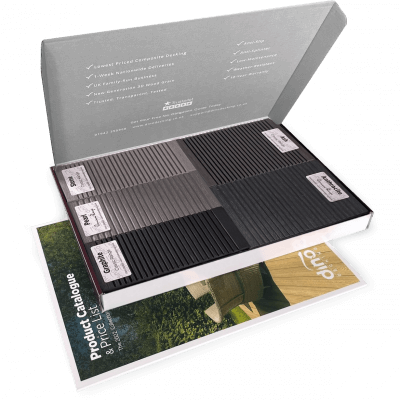10 Unique Ways to Use Interior Cladding
You’re probably aware that cladding can be a smart and practical covering for the exterior of a house, but did
Products in Stock
Lowest Prices
Express Delivery
10-Year Warranty
December Sale. Up To 15% Off.
Can you put decking over concrete? The short answer is yes. Concrete provides an ideal base for any type of decking and you can certainly put composite decking on concrete, whether that concrete is old, cracked or newly poured.
Installing composite decking over concrete can be an effective way to transform tired patios and paved areas, giving them a new lease of life with minimal groundwork required. The concrete will provide a solid base for the decking infrastructure, making it a cost-effective upgrade that doesn’t require digging out old concrete – though some repairs and work may be required. Dino Decking’s composite decking is a sturdy and weather-resistant option that will be even more durable with this kind of installation.
If you’re thinking of laying composite decking on concrete, you should first carry out a visual inspection. Most concrete bases will be suitable for a decking installation as they will provide a mostly flat and solid base. However, you should check for large cracks, dips, moss, and signs of poor drainage and water pools.
The concrete doesn’t need to be perfectly level. Slightly uneven areas can be addressed using adjustable pedestals to ensure the decking itself is level and even, but it may be worth levelling any significantly lower spots with a self-levelling compound. This can be particularly important for pooling areas to prevent moisture build-up under the decking. You might also want to consider fitting a waterproof weed membrane to help protect the joists and frame beneath the decking. It’s also worth cleaning the surface before beginning work on the decking and patching any major cracks to ensure stability.
The concrete will only usually need to be taken up or replaced if it has extensive damage, is unstable or has started to sink.

Decking does not sit directly on the concrete base but needs to be on a raised frame above it. Sleepers or low-profile joists provide airflow beneath the boards and help prevent water damage.
Decking boards form the main surface of your deck. Dino’s decking boards are an ideal choice due to their durability, moisture resistance and low-maintenance finish.
You should use fasteners or screws designed specifically for composite boards. Hidden fasteners help maintain a clean finish as well as properly securing the boards to the frame.
Spacers are used to maintain consistent expansion gaps between the decking boards. It’s important to get your deck spacing right, but as a general rule make sure they are 5-7mm apart.
Joist tape is applied along the top of joists or sleepers to protect them from moisture and prolong their lifespan. This makes the application of joist tape an important step for durability.
These are needed to secure the substructure elements directly to the concrete base.
Essential for making sure the frame is even and correctly spaced throughout the installation.
These are particularly useful when levelling out uneven concrete or if extra clearance is needed under the deck.
You should carefully plan your deck layout before beginning installation as this can save a lot of time and effort in the long run. It can also ensure you get the right amount of materials, factoring in a certain amount for wastage. Your planning should include the size and shape of the deck and the direction you want the boards to run. Drainage is also a key consideration, and you may need to allow for a slight gradient to encourage water to run off the deck surfaces.
You should also remember to factor in expansion gaps between boards and adequate joist spacing as recommended by the decking manufacturer.

Decking boards should never be laid directly on concrete. A frame made from sleepers or joists raises the boards, which helps produce an airflow and avoids water collecting directly beneath the surface of the decking – both of which are essential for preventing moisture damage. Constructing a frame also provides a stable and even base for installing the decking board. Low-profile framing is ideal when working with limited clearance. Using a correct and well-constructed frame improves longevity and also makes the decking feel more solid underfoot.
Ideally, you should also use a frame or substructure if you are covering concrete steps with composite decking. This can be trickier as the surface area of each step is smaller, but the same issues of airflow and potential damp apply if you directly place composite decking over concrete steps.
Here is a step-by-step guide on how to lay composite decking on concrete.
The concrete surface should be cleaned, with cracks filled and any uneven or pooling areas levelled out with a slight incline for drainage. You might also want to waterproof the concrete base using a membrane, sealer or coating.
When installing decking over concrete, you should avoid laying the decking boards directly on the concrete base. Installing a subframe elevates the decking boards above the concrete surface, providing vital airflow that can prevent damp and moisture damage.
When constructing the frame, composite joists are suitable for use on solid, even bases, so they should be perfect for most concrete surfaces. Adjustable pedestals may be more suitable if the base has uneven areas. Applying joist tape can add another layer of protection to protect your deck’s substructure from moisture.
Lay the decking boards by attaching them to the frame following manufacturer’s instructions. In general, you should have your boards running the same way, though some designs may incorporate edging or contrasting areas that run the other way. Use spacers to maintain the correct spacings between boards to give them room to expand and contract as the temperature and weather conditions change through the year.
Composite decking boards should not be screwed directly through to attach them to the frame beneath. Specialised fasteners should be used instead. These hidden fasteners not only attach your decking boards securely, but also provide a more pleasing look, with no exposed screws or holes to provide additional entry points for water.
You can finish the edges neatly with corner trim or fascia boards. You could opt for the same colour and finish as your decking boards, but complementing or contrasting edging can be an eye-catching alternative. Optional extras such as integrated deck lighting or built-in seating can also add more functionality to a stunning outdoor area.

Composite decking is highly water-resistant compared to traditional timber decking, but it’s not immune to water damage. Ensuring a slight incline on the decking and the concrete beneath can help avoid standing water that could damage decking boards over time.
Decking boards will expand in warmer weather, and if there is no gap between boards or between boards and walls, they may crack, twist or split. Use spacers to ensure consistent and adequate expansion gaps.
Untreated timber is far less durable than composite decking. It will expand and contract at different rates and will be far more susceptible to moisture damage and rot. It is far better to be consistent in your choice of materials and use all composite decking and compatible accessories.
Composite decking is designed to be durable, long lasting and low maintenance, but it still needs to be looked after to extend its lifespan and keep it in top condition. Regular sweeping will keep it free from most dirt and detritus, and you should try to deal with spills as and when they occur, with a more thorough cleaning every so often.
It’s also worth checking for water pooling or trapped debris beneath the boards and inspecting the joists annually if they’re accessible. For more advice on keeping your deck in tip-top condition, read our composite decking maintenance guide.
You should not directly lay decking on concrete as this can lead to moisture damage over time. You should always use joists or a frame to create proper airflow and drainage.
Concrete provides an excellent base for wooden or composite decking. As with the decking boards themselves, however, it is not a good idea for the joists to sit directly on the concrete. Pedestal supports or feet can provide an extra layer of protection, as well as letting you adjust the depth if the concrete surface is uneven.
This is not a requirement in all cases, but it is generally advisable in order to prevent moisture damage to the substructure and decking boards over a long period.
So, can you lay composite decking on concrete? You certainly can, as long as you take a little time and care over preparation.
Now that you know how to build decking on concrete, it’s important to get the right materials for the job. Composite decking is a smart way to revive old concrete patios, offering a simple installation process and a long-lasting, stylish result. Dino Decking’s composite decking boards come in a wide range of colours, durable finishes and DIY-friendly options, making them the perfect choice for your next garden project. Order your free sample pack today or get in touch with our friendly, experienced team for more information and advice.

Our sample pack contains a sample piece of each colour currently available. Order your free sample pack today to compare the colours and get a true feeling of the Dino Decking range!
You’re probably aware that cladding can be a smart and practical covering for the exterior of a house, but did
With winter approaching, you might be wondering how to heat a shed to keep it cosy and welcoming all year